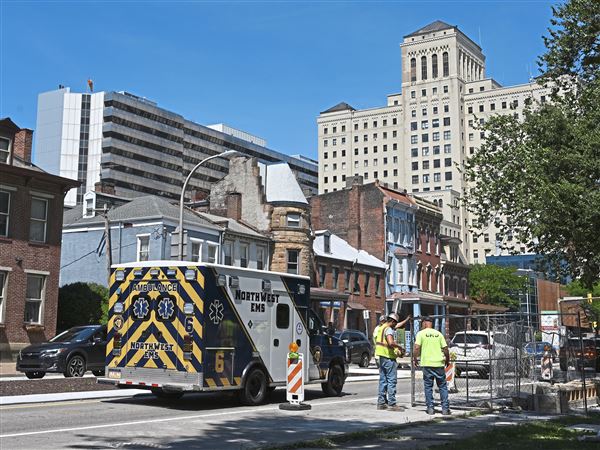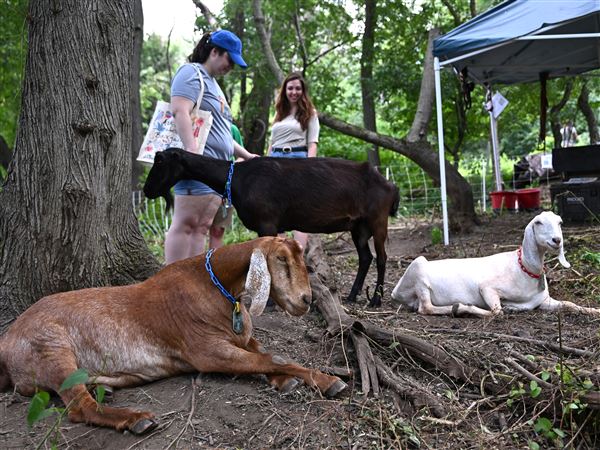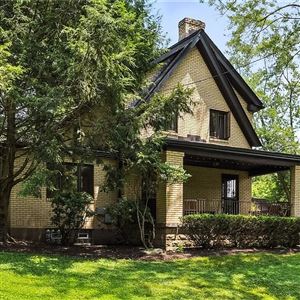The state has committed to replacing Duke Lake Dam in Ryerson Station State Park, but still is negotiating with Consol Energy Inc. to get it to pay what could be the $20 million bill.
The Pennsylvania Department of Conservation and Natural Resources announced last week that it has authorized design of a new dam that would allow refilling of the popular 62-acre boating, fishing and swimming lake in Greene County.
The lake was drained in July 2005 after cracks developed in the concrete dam and began to expand. At the time, Consol's Bailey Mine was operating its longwall mining machinery about 1,000 feet from the lake and advancing toward it.
"Duke Lake is the focal point of Ryerson Station State Park and an important source of recreational opportunities in Greene and surrounding counties," DCNR Secretary Michael DiBerardinis said last week. "A very thorough investigation into what caused the damage has ruled out natural causes for the problem, and has led us to determine that we can rebuild the dam. That's what we intend to do."
Design work will take 18 months, and construction of a new dam will take another 18 months. No one knows how long it will take to determine if Consol will pay all or any of the reconstruction costs.
John W. Norbeck, state parks director, declined to say if the investigation referred to by Mr. DiBerardinis identified the mining operation as causing the dam failure, citing the possibility of legal action against Consol if the ongoing negotiations fail. The state filed a "notice of intent to sue" against Consol on Jan. 5 in Allegheny County Common Pleas Court, indicating it believes the mining had a hand in the dam failure.
"We're in mediation with Consol and things are going quite well," said Mr. Norbeck, adding that the two sides have been meeting about once a month. "The investigation ruled out natural causes, but we'll hold on to the rest of the findings until the mediation is settled."
Asked if Consol was being pressed to pay for the new dam, Mr. Norbeck said, "That's part of the discussion and mediation."
Mr. Norbeck said the cost of replacing the dam will not be known until designs are completed. But the DCNR recently built a similarly sized dam in Lyman Run State Park, Potter County, that cost $18 million.
"This dam in Ryerson is in that ballpark," Mr. Norbeck said. "And that was a couple of years ago, so this one would be more because of inflation."
A Consol spokesman declined to comment, but the state's largest mining company previously said that it has seen no evidence linking it to the cracks.
In 1997, Consol announced plans to mine under 700 acres of the 1,164-acre park and to within 200 feet of the lake, and run three 250-foot-wide ventilation tunnels under the lake. It was the first proposal to longwall mine under a state park and it was controversial.
After the public and environmental groups criticized the plan and raised the possibility that the mining could damage the dam, the company abandoned plans to mine under the lake.
Longwall mining is a full extraction technique that causes immediate surface subsidence of up to 4 feet. The dam was outside of the accepted area or "angle of influence" for such subsidence, but the depth of the mining and the geology of the rock overburden -- the layers of rock above the coal seam that was being mined -- could have expanded that angle.
Subsidence caused by the mining was one of the possibilities reviewed by Gannett Fleming Inc. in a $1.2 million investigation the independent consultant did for the DCNR. Gannett Fleming's report has been done for at least six months but hasn't been released or the findings publicly discussed by the DCNR because of the potential for continued legal action.
"DCNR needs to come clean about who's responsible and who's going to pay to fix the dam," said Jim Kleissler, executive director of the Center for Coalfield Justice, an environmental group that first called for release of the investigation report in May.
Tucked into the southwestern corner of the state, Ryerson Station State Park once attracted more than 160,000 people a year, mainly for recreation on Duke Lake, which was created in 1960 when the now cracked dam was built across the Dunkard Fork of Wheeling Creek. In 2004, the year before it was drawn down, more than 2,200 fishermen encircled the lake on the opening day of trout season.
Mr. Norbeck said the new dam is part of a package of projects aimed at improving recreational opportunities at the park, including increased educational programming and a new hiking and bicycling trail around the lake.
First Published: November 27, 2007, 5:00 a.m.
















